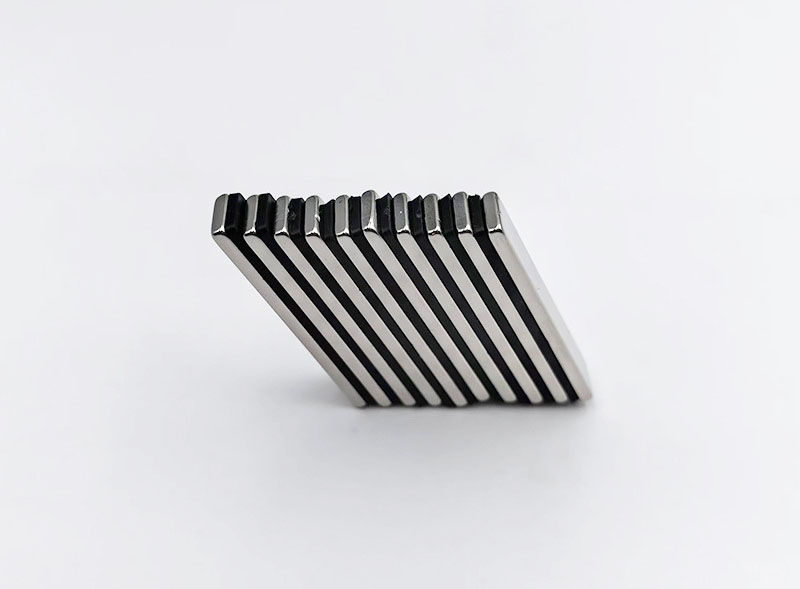Neodymium magnet (NdFeB magnet) is the highest magnetic energy product in the world today commercialized permanent magnetic material, is widely used in various industries, some netizens may find that they use neodymium magnet magnetic force seems to be not as strong as before, this is how it is?
The first possible thing is affected by temperature. NdFeB magnets are very sensitive to temperature (up to 80°C for common grades), and their temperature coefficients are typically -0.10%/°C to -0.12%/°C, meaning that for every 1°C increase in temperature, the magnet's magnetic performance decreases by about 0.1%. When the temperature exceeds about 80-100°C, neodymium magnets will begin to experience irreversible magnetic loss. And when the temperature reaches its Curie temperature (~310-400°C), the magnet will lose its magnetic properties completely.
In daily use, if neodymium magnets are exposed to high temperatures for a long time, or if they generate a lot of heat during the working process and have poor heat dissipation, it will lead to a permanent decay of magnetic properties. Especially in high-temperature working environments such as motors and generators, temperature control is the key to maintaining magnet performance.
The picture below shows a bar block neodymium magnets.

Then there is the possibility of corrosion. Although the surface of most neodymium magnets is treated with a protective coating (e.g., nickel-plated, zinc-plated, etc.), when exposed to humid, acidic or alkaline environments for a long period of time, the coating may crack or flake off, thus exposing the neodymium-iron-boron material inside. At this point, neodymium magnets will undergo oxidative corrosion, resulting in a gradual decay of their magnetic properties.
Other possibilities are that neodymium magnets are mechanically damaged, and when struck may break, leading to a partial loss of magnetism, especially as the magnetic field of the broken part is significantly weakened.
Finally, strong external magnetic fields and high currents can also cause the magnetic properties of neodymium magnets to decay.
The above is the neodymium magnet is not as strong as before some of the reasons for the analysis of the introduction, both physical and chemical factors, but also the impact of the use of the environment, when you encounter a similar situation you can refer to the above content to find out where the problem lies.
Related Content Articles;
Do neodymium magnets demagnetise at transient high temperatures?
Do magnets demagnetize above 80℃?
High temperature resistance neodymium magnets also will demagnetization
 China Neodymium And Ferrite Magnets Manufacturer & Supplier
China Neodymium And Ferrite Magnets Manufacturer & Supplier 


